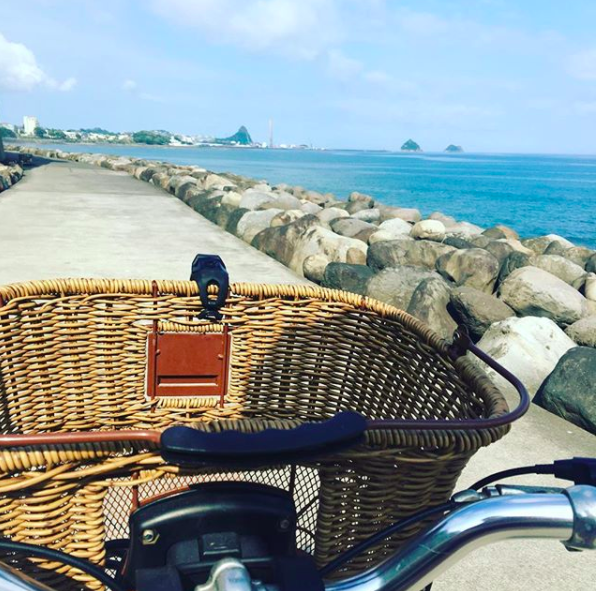Travel Better & Tackle the Urgent Climate Crisis
By Jamie Silk, Trustee
Time is running out to curtail our cumulative CO2 emissions with less than 12 years to stabilise global warming at 1.5 degree C above pre-industrial temperatures (IPCC)1. With 20% of NZ’s carbon emissions from transport, we can all make an immediate impact through urgently changing how we travel.
Electric vehicles (EVs) are part of that story – with 85%+ renewable electricity in NZ, efficient electric motors, a good charging network (and 1 million chargers at home), 30c/ litre equivalent fuel costs and the chance to tackle $1 billion of health costs from emissions.
But with just 12 years to make a big impact on our cumulative emissions, can simply substituting EVs for ICE vehicles deliver fast enough?
What You Can Start Doing Now
Using different transition scenarios for our car travel and comparing them to a high EV growth scenario in NZ, we see that cumulative CO2 emissions (which is what really matters) will not fall fast enough if we only switch to EVs.
We need to prioritise aggressively reducing the kilometers traveled by vehicles (VKMT) and additionally reduce the number of new vehicles imported.
Replacing petrol/diesel (ICE) cars with EVs, whilst helping, will only reduce cumulative emissions by a tiny 5% by 2050 (our business as usual case) compared to continued ICE passenger vehicles (see Figure 1 below). This is because building new EVs generates a lot of carbon emissions. Even if we change assumptions on EV take up, technology or our energy mix, to double or triple this, we barely scratch the impact we must make.
COMMITTING TO CLEANER TRAVEL SURVEY
In contrast, reducing the number of vehicles in our fleet by 2% p.a. (whilst still driving the same distance per vehicle), cuts cumulative CO2 by 45%. Doing this AND cutting VKMT for each vehicle by 10% p.a. delivers a massive 75% reduction in cumulative carbon.
Since we need to massively reduce our carbon emissions, we need to start cutting the KMs traveled by cars and the number of new cars we import.
The Good News
The good news is that we do not necessarily need to make less journeys – or even less car journeys – to start doing this today. We already have many lower carbon “travel” choices (e.g. car sharing, public transport, scooter/ motor bikes, e-bike, cycling, multi-tasking on every trip and video calls).
It is not easy to change what we do. It would help if there was better “infrastructure” (e.g. reserved car-pooling car parks at work/ in town) or digital tools (e.g. everyone use car sharing apps like Local Link or Smarttravel). We each have different needs and priorities, and it is hard to break old habits and create new ones. But with travel it is absolutely in our hands to start making a difference today (whilst policy makers, infrastructure investors and businesses re-engineer how we will deliver on the transport transition).
The personal and societal rewards are real and tangible.
If a car absolutely needs to be replaced and used, then find a solution to access an EV as it will help (you may or may not need to buy it!). Then intentionally engineer change so that the vehicle will be shared between organisations, used on a ride share basis and/ or for multiple tasks on every journey to drive down VKMTs and the need for other new cars. If you are a council or employer, provide the infrastructure that rewards this change such as VIP parking for ride share, use of bus lanes, digital tools and behaviour change support to make this easy.
Motivated by climate and health
Simply cutting the kilometers cars travel by 10% p.a. with car sharing or biking we can cut our cumulative emissions by an amazing 75% by 2050 for no investment, versus carrying on with our current habits and cars. If we simply carry on switching to EVs at the 16% p.a. growth current rate, we only reduce our cumulative emissions by 5%.
Motivated by more affordable travel
The IRD estimates the cost of car travel (with wear and tear) at 79 cents/ km. Car sharing can quickly help commuters from Inglewood, Waitara or round the coast to save hundreds of dollars a year. Eliminating the need for a 2nd car can start saving much more!
So personally start changing your travel habits today, and if you are in a position of influence on policy, investment and business, help drive the focus to where we can make a rapid and substantive impact on cumulative carbon emissions.
Key assumptions used in the above scenarios:
· All scenarios - embedded carbon in new cars of 12.3 t-CO2 for ICE and 15.4 t-CO2 for EVs; carbon from car use of 0.000251 t-CO2/km for ICE and 0.000025 t-CO2/km for EV;
· BAU specific - a 16% p.a. EV growth rate, 2% p.a. business as usual car fleet growth rate, average 12,000km p.a. travel and carbon assumptions as noted below. The EV growth rate is consistent with our current trend. Though a simplistic growth scenario it reasonably benchmarks with, for example, Bloomberg New Energy Finance, 2020 projecting 58% of new car sales as EVs in 2040 against 54% in the model.
1 Special Report of the Intergovernmental Panel on Climate Change (IPCC) on Global Warming 1.5°C, 2018.
Join us in making a commitment today to try something different! Take our latest Committing to Cleaner Transport Survey.
For more information on cleaner travel options check out
Cleaner, Cheaper, Healthier Travel
OR
If you’d like to learn more about Electric Vehicles and alternative green transport options for your business, please check out our



